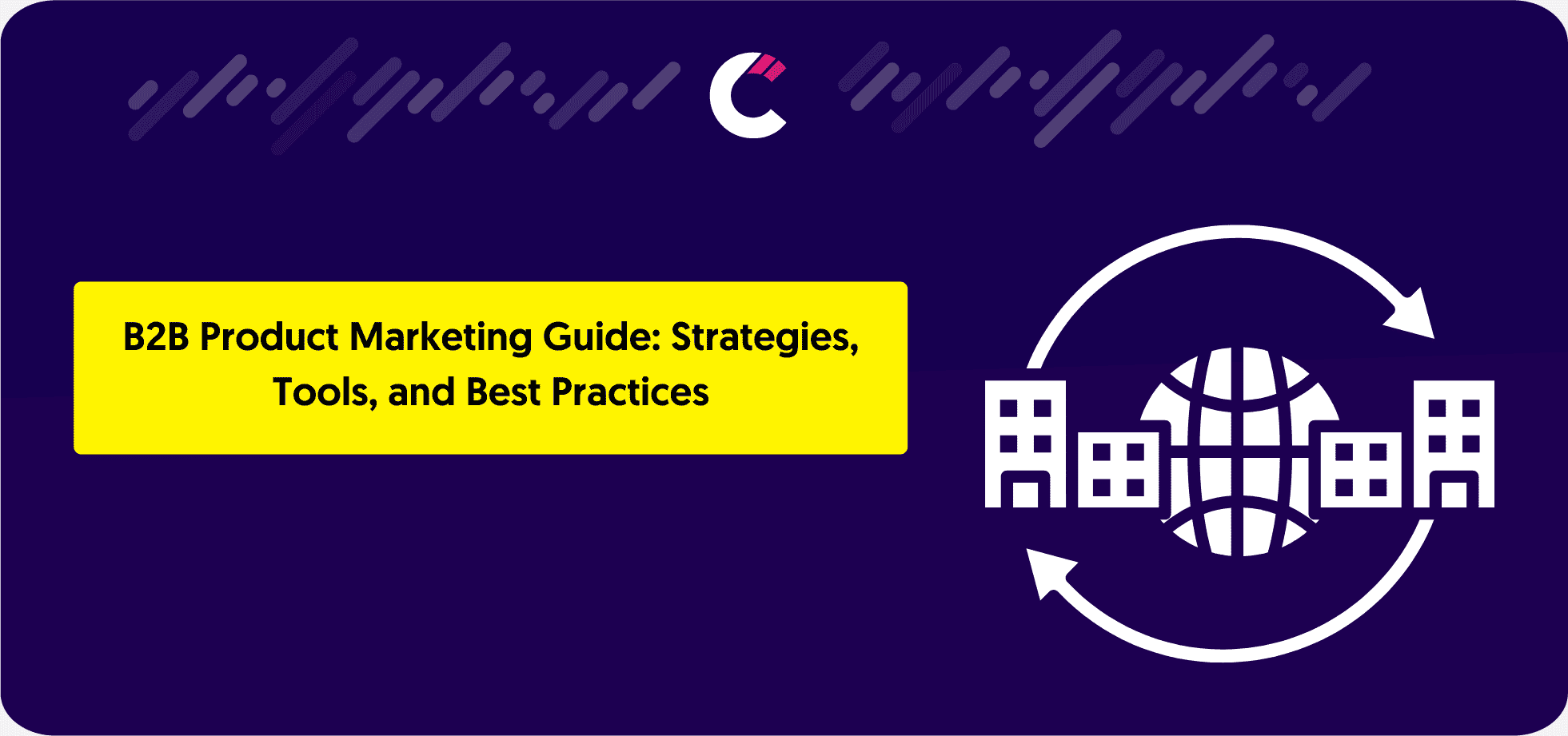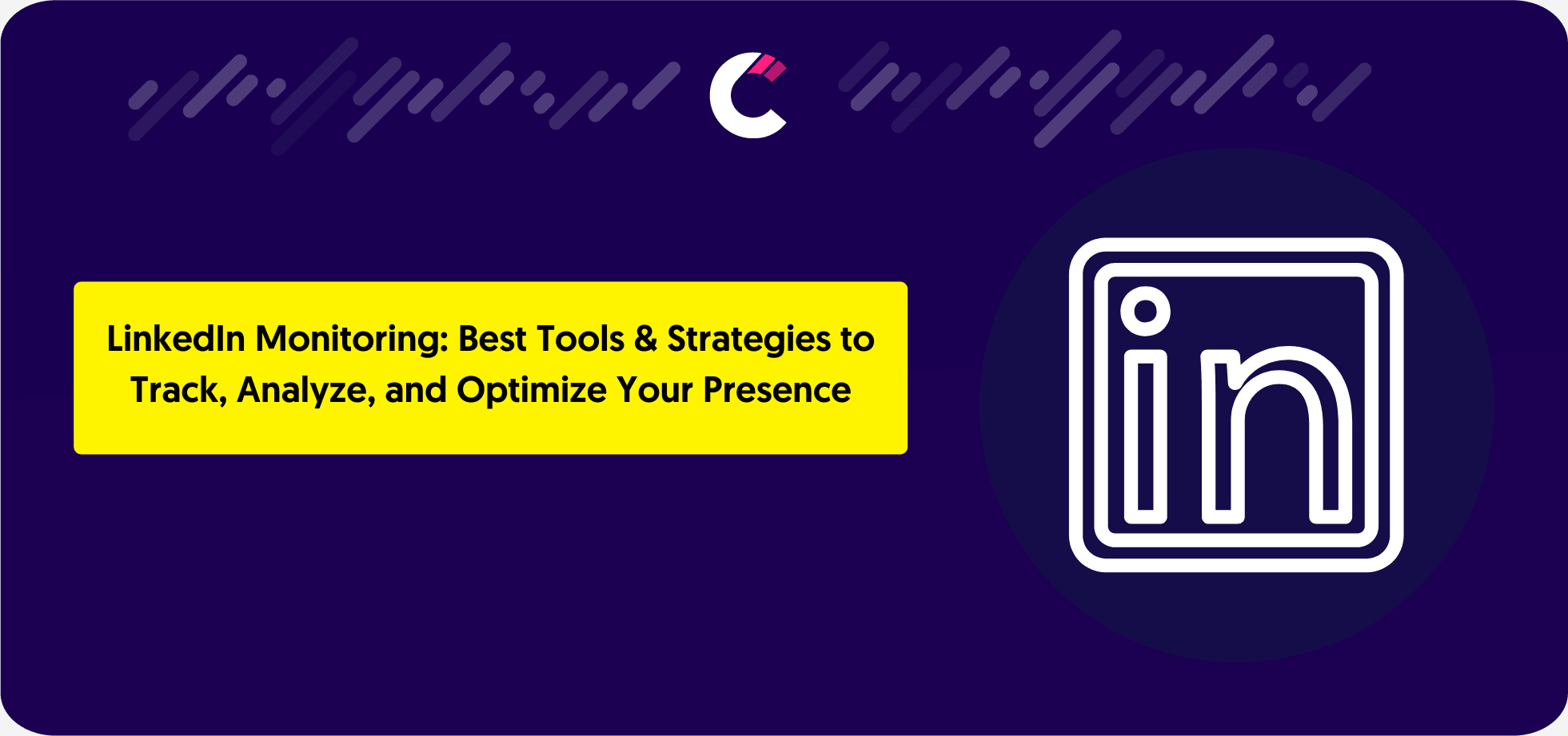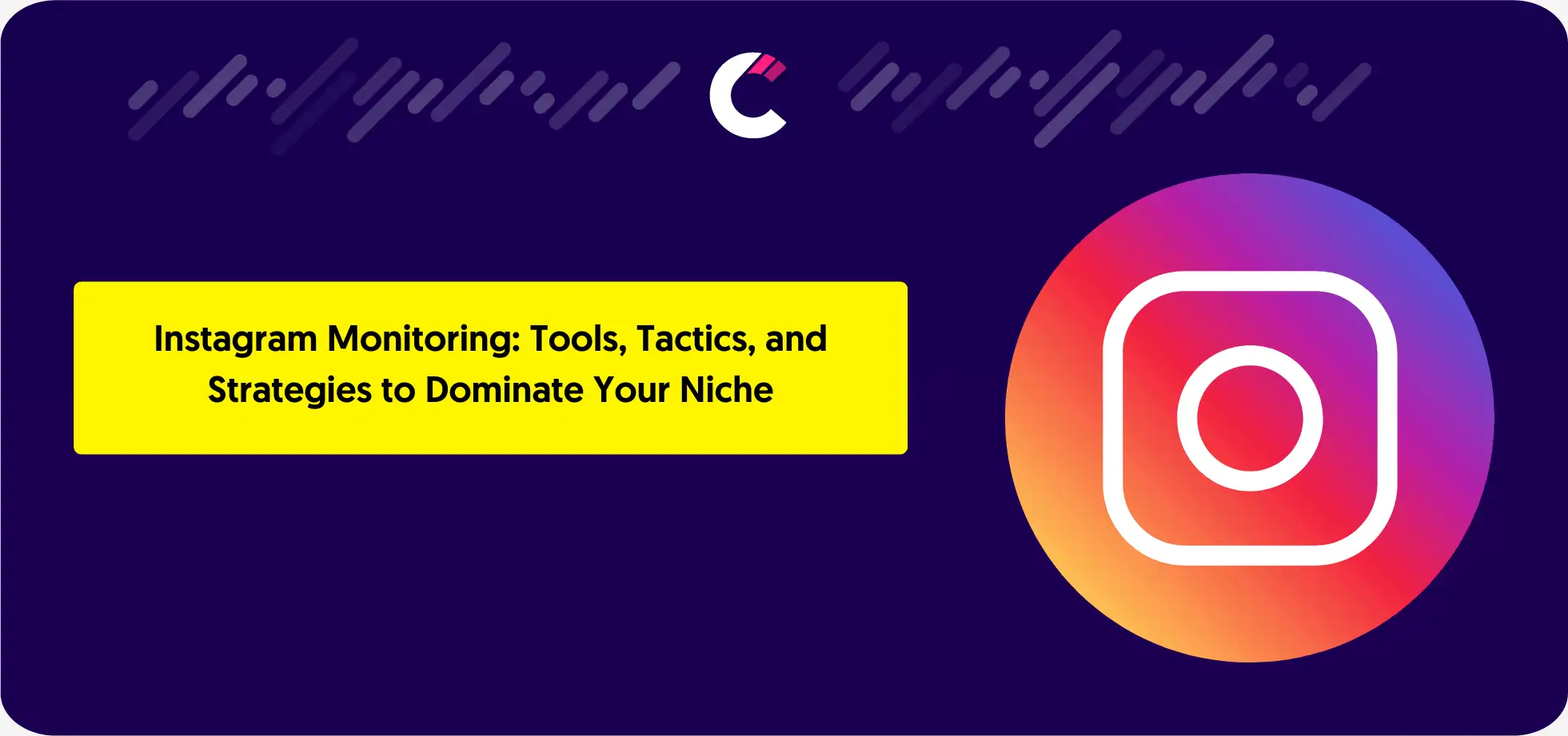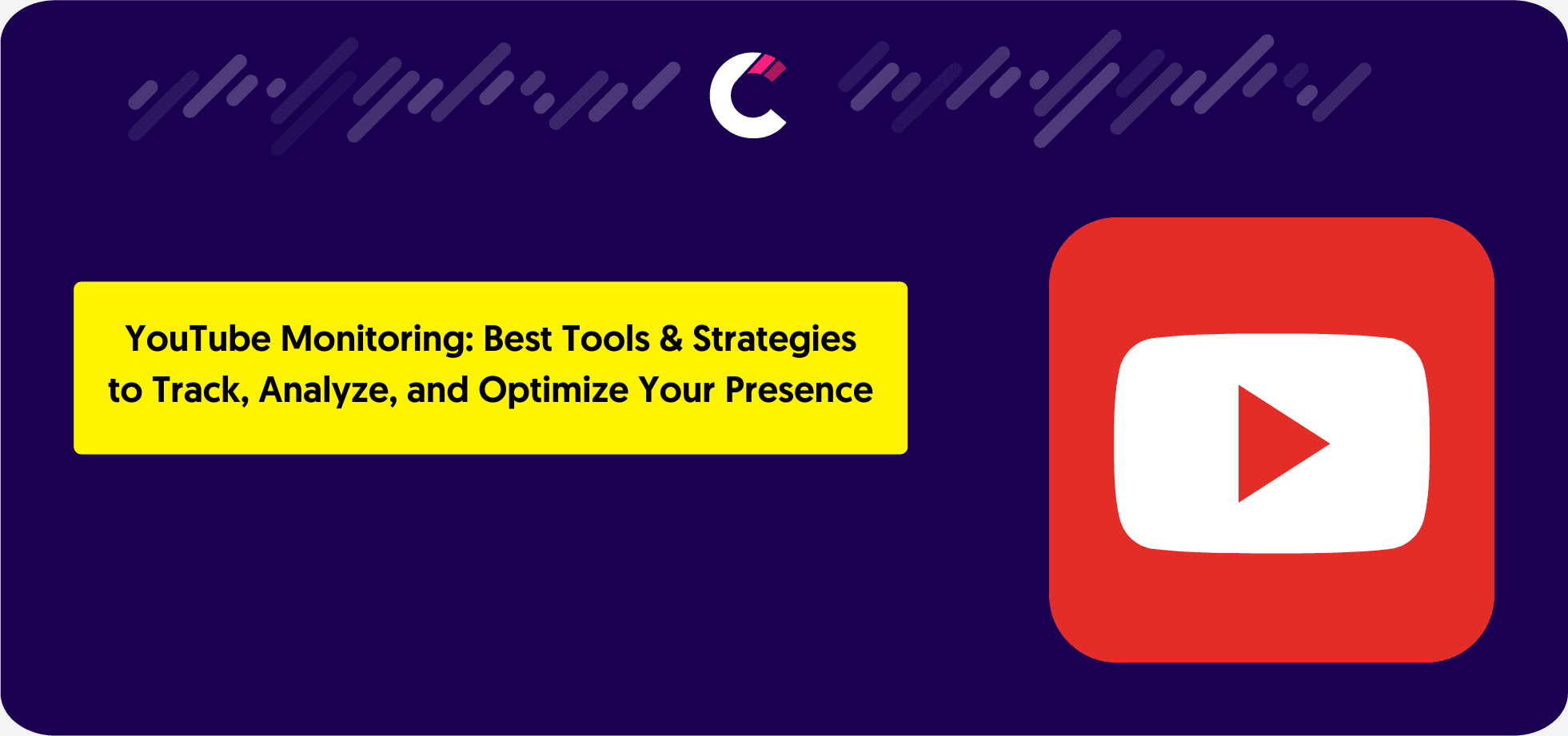What is B2B Product Marketing?
B2B product marketing is the practice of promoting and selling products or services from one business to another. Unlike B2C marketing, which targets individual consumers, B2B marketing focuses on helping businesses solve challenges and achieve growth.
It emphasizes relationship-building, clear value communication, and tailored solutions to meet business-specific needs. The key objective is not just to sell a product but to position it as an indispensable solution for the buyer’s business.
Difference Between B2B and B2C Marketing
While B2B and B2C marketing share some similarities, they differ significantly in their approach:
- Target Audience: B2B marketing targets professionals, decision-makers, or teams within a business, whereas B2C focuses on individual consumers.
- Buying Cycle: B2B buyers have a longer decision-making process involving multiple stakeholders. B2C buyers often make quicker, emotion-driven decisions.
- Content and Messaging: B2B marketing prioritizes detailed, informative content like case studies, whitepapers, and product demos. B2C marketing, on the other hand, leans on emotional appeals and storytelling.
- Relationship Building: B2B requires a strong emphasis on trust and long-term partnerships, while B2C often focuses on one-time purchases or brand loyalty.
This contrast highlights the strategic depth of B2B product marketing and its focus on creating value for businesses over time.
The Fundamentals of a B2B Product Marketing Strategy
Crafting a successful B2B product marketing strategy requires a deep understanding of your target market, a clear value proposition, and a well-thought-out plan to position your product effectively.
Unlike generic approaches, a B2B strategy prioritizes precise alignment with buyer needs, showcasing how your product solves critical business challenges. Below, we’ll explore the key building blocks of a robust B2B marketing approach.
Understanding Your Target Market and Building Buyer Personas
Every effective B2B product marketing strategy starts with understanding your audience. Buyer personas—fictional representations of your ideal customers—help you map out customer goals, pain points, and decision-making behaviors. For instance:
- Who are the key decision-makers? Identify whether you’re targeting C-suite executives, managers, or specific departments.
- What are their primary challenges? Understanding their pain points helps position your product as a tailored solution.
- What motivates their decisions? Focus on practical drivers like ROI, efficiency, and scalability rather than emotional triggers.
Developing personas ensures that your marketing efforts resonate with specific segments, creating a targeted and relevant experience.
Defining Your Product’s Value Proposition and Market Fit
A strong value proposition lies at the heart of B2B product marketing. Your product needs to stand out by clearly answering:
- What problem does it solve? Define the specific challenges your product addresses.
- Why is it better than alternatives? Highlight unique features or benefits that competitors don’t offer.
- Who is it for? Pinpoint the industries or business sizes that will benefit most from your product.
Moreover, validating your B2B product market fit is essential. Engage in customer interviews, analyze market trends, and test your product with early adopters to confirm that it meets real business needs.
How to Position Your B2B Product Effectively
Positioning is the foundation of any successful B2B product marketing strategy. It determines how your product is perceived in the market and sets the stage for attracting the right customers. Effective positioning focuses on answering two critical questions:
- Why should a business choose your product? Highlight your unique strengths, such as innovation, cost savings, or scalability.
- How does your product compare to competitors? Identify gaps in competitor offerings and emphasize how your product addresses them better.
To refine your positioning:
- Analyze the Competition: Study competitors’ messaging, pricing, and customer feedback to identify areas where you can stand out.
- Tailor to Your Audience: Ensure your positioning aligns with the needs, language, and goals of your target market.
Focus on Outcomes: Showcase the tangible results your product delivers, such as increased productivity, reduced costs, or improved workflows.
Creating Messaging That Resonates with Your Audience
Your messaging is what brings your positioning to life. It should communicate your product’s value in a way that speaks directly to your audience. Here’s how to craft compelling messaging for B2B product marketing:
- Start with the Pain Points: Open with the challenges your audience faces to grab their attention.
- Emphasize the Benefits: Shift the focus from features to outcomes, such as how your product saves time or drives revenue.
- Use Clear and Professional Language: Avoid jargon or overly complex language—clarity is key in B2B marketing.
For example, instead of saying, “Our solution integrates advanced AI algorithms,” you could say, “Our product helps your business automate workflows and cut operational costs by 30%.”
Messaging that speaks to specific problems and solutions ensures your audience feels understood and engaged.
Pricing Strategies for B2B Products
Pricing in B2B product marketing is more than just setting a number—it’s about aligning your product’s perceived value with your target market’s expectations. Unlike B2C pricing, which often involves competitive or psychological pricing tactics, B2B pricing strategies are typically grounded in data, industry norms, and long-term ROI considerations.
Key approaches to B2B pricing include:
- Value-Based Pricing: Align your pricing with the tangible outcomes your product delivers, such as cost savings, increased revenue, or productivity improvements.
- Tiered Pricing: Offer multiple pricing levels to accommodate businesses of different sizes or needs. For instance, a SaaS company might provide “Basic,” “Pro,” and “Enterprise” plans with varying features.
- Usage-Based Pricing: Charge based on how much the customer uses the product. This model is common for cloud-based services or platforms.
- Freemium Models: Provide basic functionality for free while offering premium features for paying customers. This is especially popular in B2B SaaS product marketing.
When determining your pricing:
- Research competitors to understand industry standards.
- Conduct customer surveys to gauge willingness to pay.
- Test pricing models to find the optimal balance between affordability and profitability.
Your pricing strategy should not only reflect your product’s value but also ensure it remains competitive and appealing to your target audience.
How to Build a Successful B2B Product Launch Marketing Plan
Launching a B2B product is a critical moment that demands a well-orchestrated approach to create market impact. A B2B product launch marketing plan ensures your product reaches the right audience, addresses their needs, and stands out from competitors. Below are detailed steps, enriched with examples, to execute a successful launch.
Step 1: Research Your Market and Competition
Market research forms the foundation of a successful launch. Without understanding the market landscape and competition, you risk creating a product that doesn’t resonate with buyers or fails to differentiate.
- Analyze Competitors: Use tools like Competitors App to monitor product launches, pricing updates, and ad campaigns of competitors. For example, if you’re launching a SaaS analytics tool, study how platforms like Tableau or Looker position their products.
- Identify Market Gaps: Talk to potential customers to uncover unmet needs. For example, Slack succeeded by identifying a need for seamless team communication in a crowded market.
- Create Buyer Personas: Define profiles of key decision-makers, such as CIOs or department managers, focusing on their pain points and priorities.
A clear understanding of the competitive landscape allows you to position your product as a superior alternative.
Step 2: Create a Go-To-Market (GTM) Strategy
A robust GTM strategy aligns your launch objectives with actionable plans to capture market attention. It answers three key questions:
- Who is your audience? Segment your market into industries or job functions. For instance, targeting HR managers for an employee wellness app requires different messaging than targeting CFOs.
- How will you position the product? Highlight unique value propositions. For example, Monday.com positions itself as a flexible project management tool for both startups and enterprises.
- What is your launch timeline? Include milestones like beta launches, product demos, or webinars.
Additionally, plan promotional activities such as early bird discounts or exclusive access for existing customers. A well-crafted GTM strategy ensures clarity and focus throughout the launch process.
Step 3: Develop Pre-Launch Content and Campaigns
Creating excitement before your product goes live is essential to building momentum. Use content to educate, engage, and intrigue your target audience.
- Teasers on Social Media: Share sneak peeks of your product’s features. For example, Dropbox’s early campaign used exclusivity by offering invite-only access, generating massive curiosity.
- Email Campaigns: Send pre-launch emails highlighting the problem your product solves. Include case studies or testimonials if available.
- Blog Content: Publish articles that explain the product’s value in addressing industry pain points. For instance, a cybersecurity company could write about preventing data breaches and tie the narrative to their upcoming solution.
Pre-launch content primes your audience, making them more likely to engage when the product officially launches.
Step 4: Execute a Multi-Channel Launch Plan
On the launch day, synchronization across channels is key to amplifying your product’s visibility. Successful launches leverage multiple platforms to engage a diverse audience.
- Paid Ads: Run Google Ads targeting high-intent keywords and LinkedIn Ads aimed at decision-makers. For instance, Salesforce’s launch of its Einstein AI feature was heavily promoted via digital ads to reach enterprise clients.
- Press Coverage: Publish press releases and pitch stories to industry media outlets. Use platforms like PR Newswire to ensure wide coverage.
- Sales Enablement: Provide your sales team with launch kits, including product decks, FAQs, and customer scenarios to support prospect discussions.
For example, HubSpot’s product launches often combine blog posts, live events, and webinars to engage their user base and attract new customers simultaneously.
Step 5: Measure Launch Performance and Refine
Launching a product is only the beginning. The success of a B2B product launch marketing plan hinges on your ability to monitor and refine based on performance data.
- Metrics to Track: Focus on KPIs such as:
- Lead generation and conversions.
- Website traffic and click-through rates on ads.
- Engagement metrics like email open rates and social media shares.
- Customer Feedback: Gather feedback from early adopters to identify areas of improvement.
- Agile Adjustments: If certain channels underperform, shift resources to those that drive better results.
For instance, after launching, Zoom analyzed customer feedback to refine its product and quickly rolled out new features, which helped it dominate the video conferencing market.
Strategies to Boost B2B Product Marketing Success
To thrive in the competitive world of B2B product marketing, businesses need innovative strategies that maximize their product’s reach and impact. Below are key approaches to elevate your marketing efforts, coupled with actionable insights for implementation.
Leverage Data-Driven Insights for Decision Making
Data is the backbone of successful B2B marketing. It enables you to refine your strategies, optimize campaigns, and align efforts with customer behavior.
- Actionable Insight: Use tools like Google Analytics or HubSpot to track website traffic, campaign performance, and customer interactions.
- Example: A tech company launching a new CRM tool can analyze search trends to identify features most in demand, ensuring their messaging highlights these aspects.
- Pro Tip: Combine quantitative data with qualitative insights, such as customer surveys or feedback, to gain a holistic view.
Leverage Data-Driven Insights for Decision Making
Data is the backbone of successful B2B marketing. It enables you to refine your strategies, optimize campaigns, and align efforts with customer behavior.
- Actionable Insight: Use tools like Google Analytics or HubSpot to track website traffic, campaign performance, and customer interactions.
- Example: A tech company launching a new CRM tool can analyze search trends to identify features most in demand, ensuring their messaging highlights these aspects.
- Pro Tip: Combine quantitative data with qualitative insights, such as customer surveys or feedback, to gain a holistic view.
Personalize the User Journey for Customer Segments
B2B buyers expect personalized experiences that address their specific challenges and goals. Tailored interactions can significantly improve engagement and conversion rates.
- Actionable Insight: Segment your audience by industry, company size, or job role, and create targeted campaigns for each group.
- Example: A SaaS provider might tailor its messaging for startups by focusing on affordability, while emphasizing scalability for enterprises.
Pro Tip: Utilize marketing automation tools like Marketo or Pardot to deliver personalized content at scale.
Use SEO and Content Marketing to Attract Leads
SEO and content marketing are critical for driving organic traffic and establishing thought leadership in your niche.
- Actionable Insight: Target high-intent keywords like “best B2B SaaS product marketing tools” or “B2B product marketing examples” to capture leads actively searching for solutions.
- Example: HubSpot’s blogs and guides are a benchmark for using SEO-rich content to attract and convert B2B buyers.
- Pro Tip: Pair long-form blog posts with engaging formats like videos, infographics, or webinars to cater to diverse preferences.
Employ Growth Loops to Expand Customer Reach
Growth loops leverage user actions to drive additional engagement and referrals, creating a self-sustaining growth engine.
- Actionable Insight: Implement referral programs or incentivize users to share feedback publicly.
- Example: Dropbox’s referral program, which rewarded users with additional storage, is a classic example of a successful growth loop.
- Pro Tip: Design your growth loop around your product’s core value. For example, collaboration tools like Slack grow naturally when teams invite more users.
Build a Sales Enablement Program to Support Your Teams
A strong alignment between marketing and sales is crucial for B2B product marketing success. Sales enablement ensures that sales teams are well-equipped to engage prospects effectively.
- Actionable Insight: Provide sales teams with detailed product sheets, competitive analysis, and case studies to address customer objections confidently.
- Example: Salesforce excels at equipping its sales team with robust training and resources to drive customer conversions.
- Pro Tip: Regularly update sales enablement materials based on market trends and feedback to keep them relevant.
B2B Product Marketing Examples and Case Studies
Examining successful B2B product marketing campaigns provides valuable insights into effective strategies and tactics. Below are notable examples from the SaaS and tech industries, complete with descriptions and links to detailed case studies.
B2B SaaS Product Marketing Success Stories
- Slack: Building Enterprise Appeal
- Description: Slack transitioned from targeting small teams to large enterprises by emphasizing advanced features like compliance, scalability, and security. Through targeted campaigns, Slack demonstrated how its product could solve the unique challenges of large organizations.
- What Worked: Their ability to adapt messaging and tailor campaigns for enterprise buyers enabled them to expand their market share rapidly.
- Key Takeaway: Positioning your product as a solution to specific pain points within a niche audience can significantly improve adoption.
- HubSpot: Pioneering Inbound Marketing
- Description: HubSpot revolutionized B2B SaaS product marketing by creating educational content that explained the value of inbound marketing while subtly promoting its own tools. Free resources, blogs, and certification programs were at the heart of this strategy.
- What Worked: HubSpot built trust by offering immense value upfront, converting leads into paying customers over time.
- Key Takeaway: Providing free, educational content can establish your brand as an industry authority and create a pipeline of qualified leads.
B2B Tech Product Marketing Innovations
- Microsoft Azure: Industry-Specific Campaigns
- Description: Microsoft focused its Azure marketing efforts on high-growth industries like healthcare and finance. They created tailored campaigns and case studies showcasing how Azure solved specific challenges, such as data security and compliance.
- What Worked: This hyper-focused approach ensured their messaging resonated with decision-makers in these industries.
- Key Takeaway: Customizing campaigns by industry allows you to address sector-specific challenges and capture attention more effectively.
- Dropbox Business: Focusing on Teamwork and Security
- Description: Dropbox shifted its focus to businesses by creating campaigns centered around collaboration and secure file sharing. This included ads showcasing team productivity and highlighting how Dropbox integrates with other enterprise tools.
- What Worked: Messaging that addressed real business concerns, like security and efficiency, resonated with its target audience.
- Key Takeaway: Focusing on tangible benefits like security and collaboration ensures your messaging appeals to business buyers.
- Microsoft Azure: Industry-Specific Campaigns
Lessons from Top B2B Product Marketing Campaigns
- Zendesk’s “Born to Solve” Campaign
- Description: Zendesk used a playful and relatable campaign to highlight its customer service solutions. By emphasizing the theme of “problem-solving,” they positioned their product as indispensable to businesses.
- Lesson Learned: Creative storytelling can make technical products feel approachable and essential.
- Salesforce’s Dreamforce Events
- Description: Salesforce leverages its annual Dreamforce event to showcase new features, provide hands-on demos, and foster community among its users. The event doubles as a massive promotional platform and a networking hub for customers.
- Lesson Learned: Hosting events that connect with your audience can strengthen brand loyalty and create buzz around your product.
Tools to Enhance B2B Product Marketing Efforts
Effective B2B product marketing requires the right tools to streamline processes, enhance decision-making, and optimize campaign outcomes.
Below, we explore essential tools that can empower your marketing efforts, complete with descriptions, key features, and benefits. For a comprehensive list of 35+ tools, check out our guide on product marketing tools.
How Competitors App Supports B2B Product Marketing
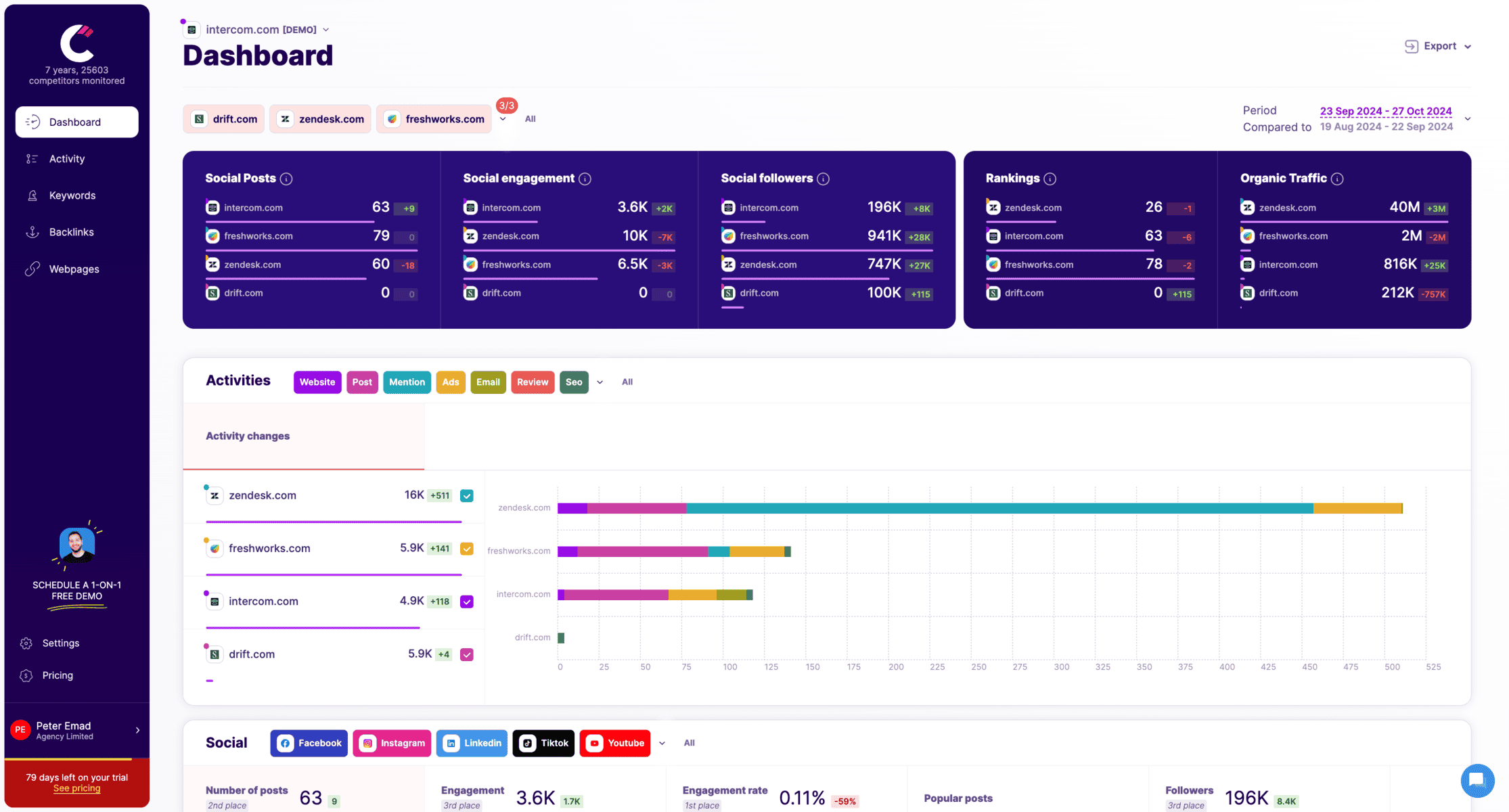
Competitors App is a powerful tool for businesses looking to gain a competitive edge in the market. By tracking competitor activities, this tool provides actionable insights that can inform your B2B product marketing strategy.
- Key Features:
- Monitor competitor product launches, pricing updates, and marketing campaigns.
- Track changes on competitors’ websites, including content updates and new pages.
- Analyze social media activity and ad campaigns to understand engagement strategies.
- Benefits:
- Stay informed about industry trends and competitor moves in real-time.
- Adjust your positioning based on competitor strengths and weaknesses.
- Save time by consolidating competitor research into a single platform.
Example Use Case: A B2B SaaS company launching a CRM tool can use Competitors App to monitor how existing players in the market like Salesforce or Zoho position their products and adjust their own launch plan accordingly.
Pricing: Starts at $19/month.
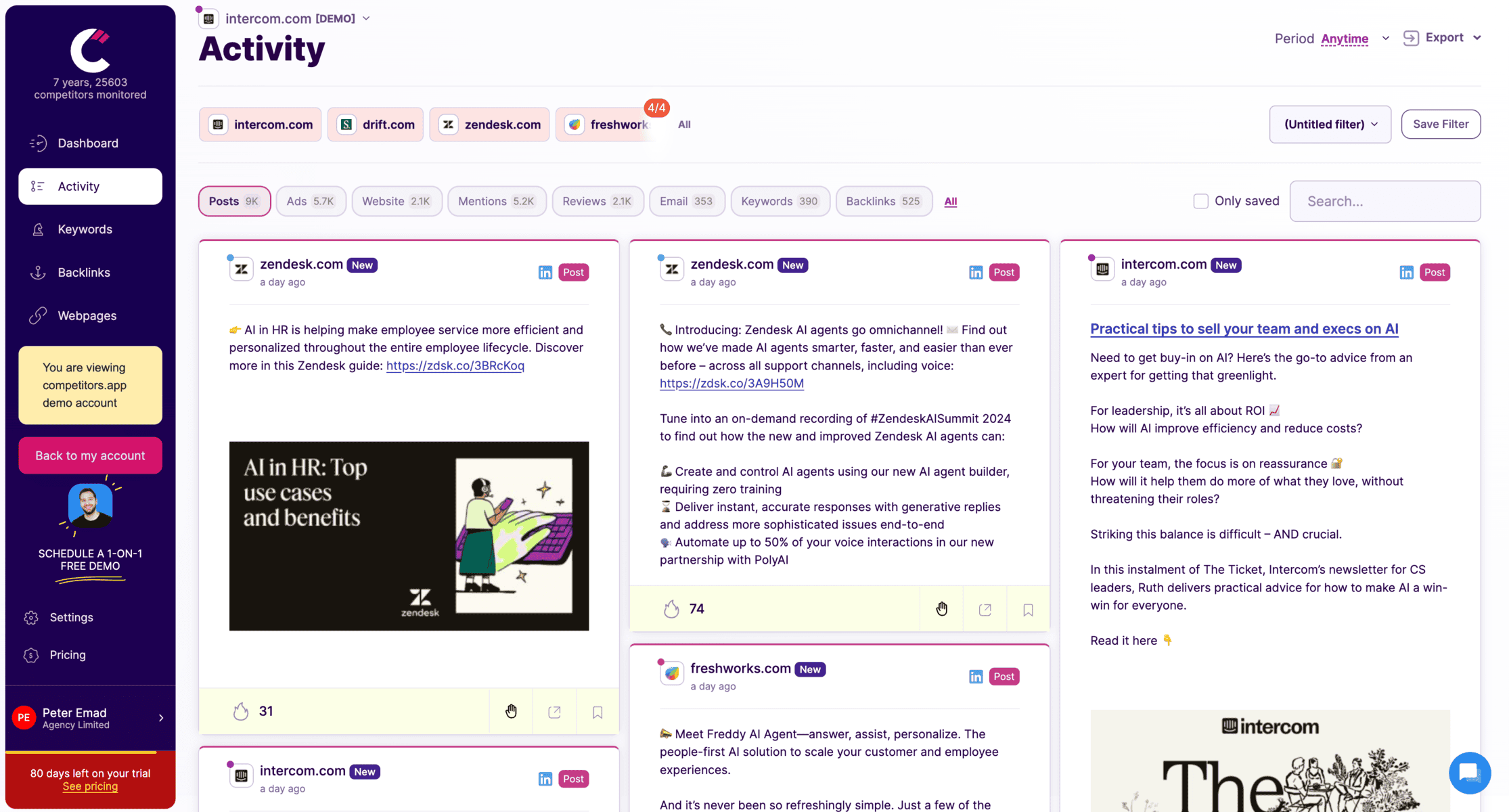
Tracks competitor social media updates across LinkedIn, Facebook, Twitter, and more.
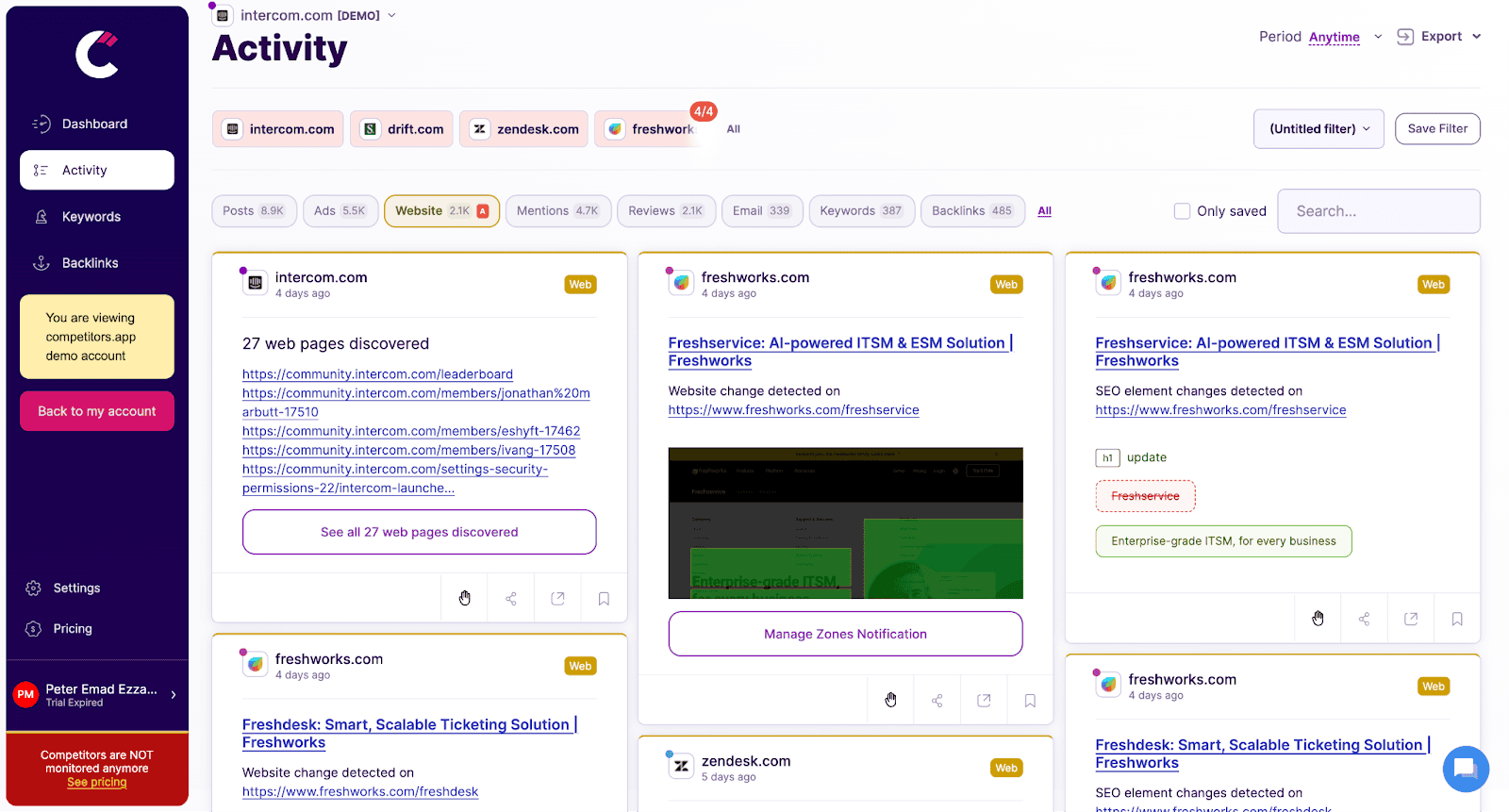
Monitors changes on competitors’ websites, such as product updates, pricing adjustments, and new messaging, providing instant alerts to help sales teams respond promptly.
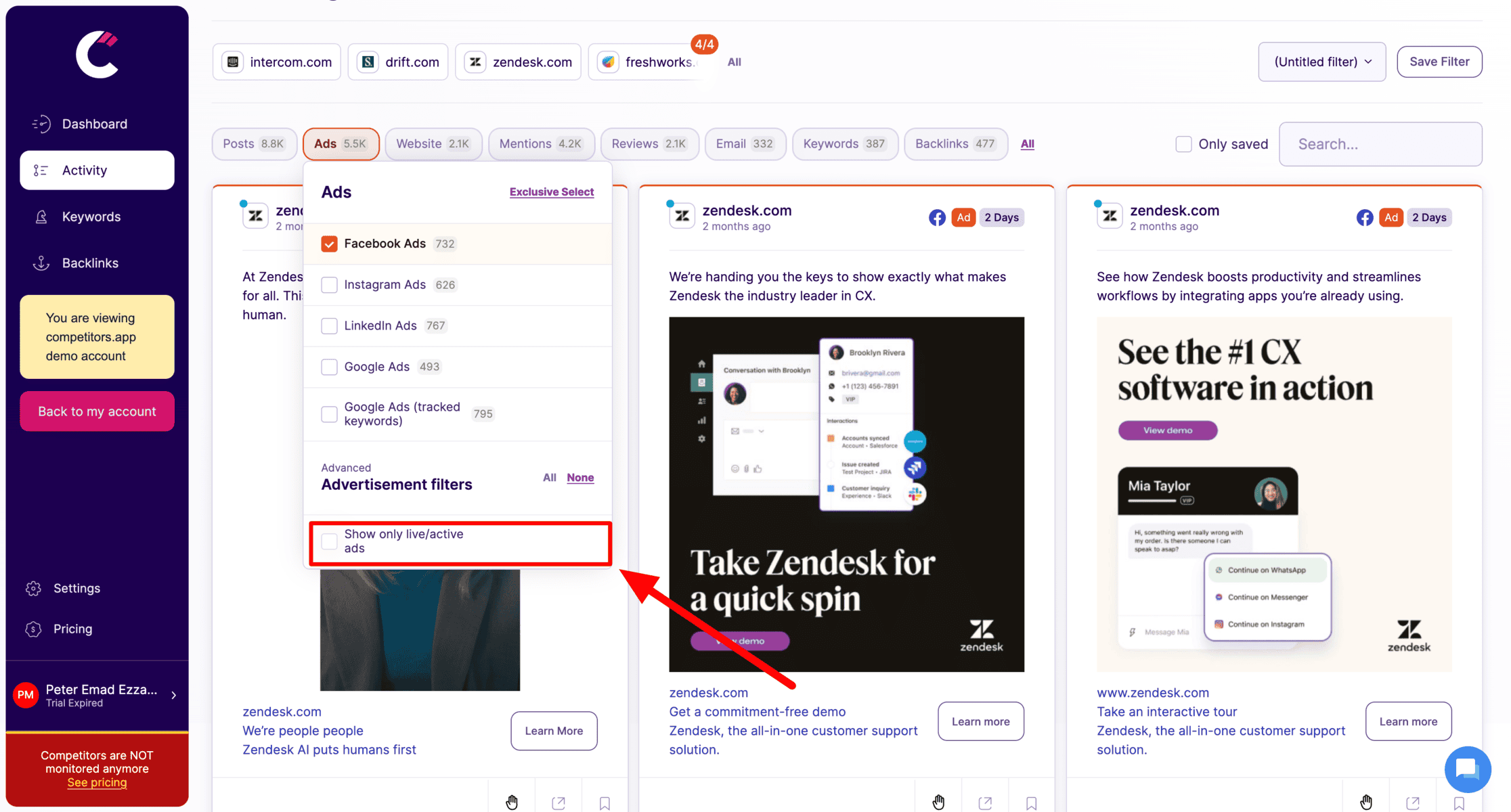
Tracks digital ad campaigns across platforms like Google Ads, Facebook, LinkedIn, and Instagram. It provides details on ad creatives, spending, and performance metrics, helping teams analyze successful ad strategies.

Analyzes competitors’ keyword strategies, organic rankings, and backlinks, allowing teams to refine their own SEO tactics and boost search visibility.

Tracks competitors’ email campaigns, including content, frequency, and engagement metrics, helping sales teams understand email tactics that drive engagement and conversions.
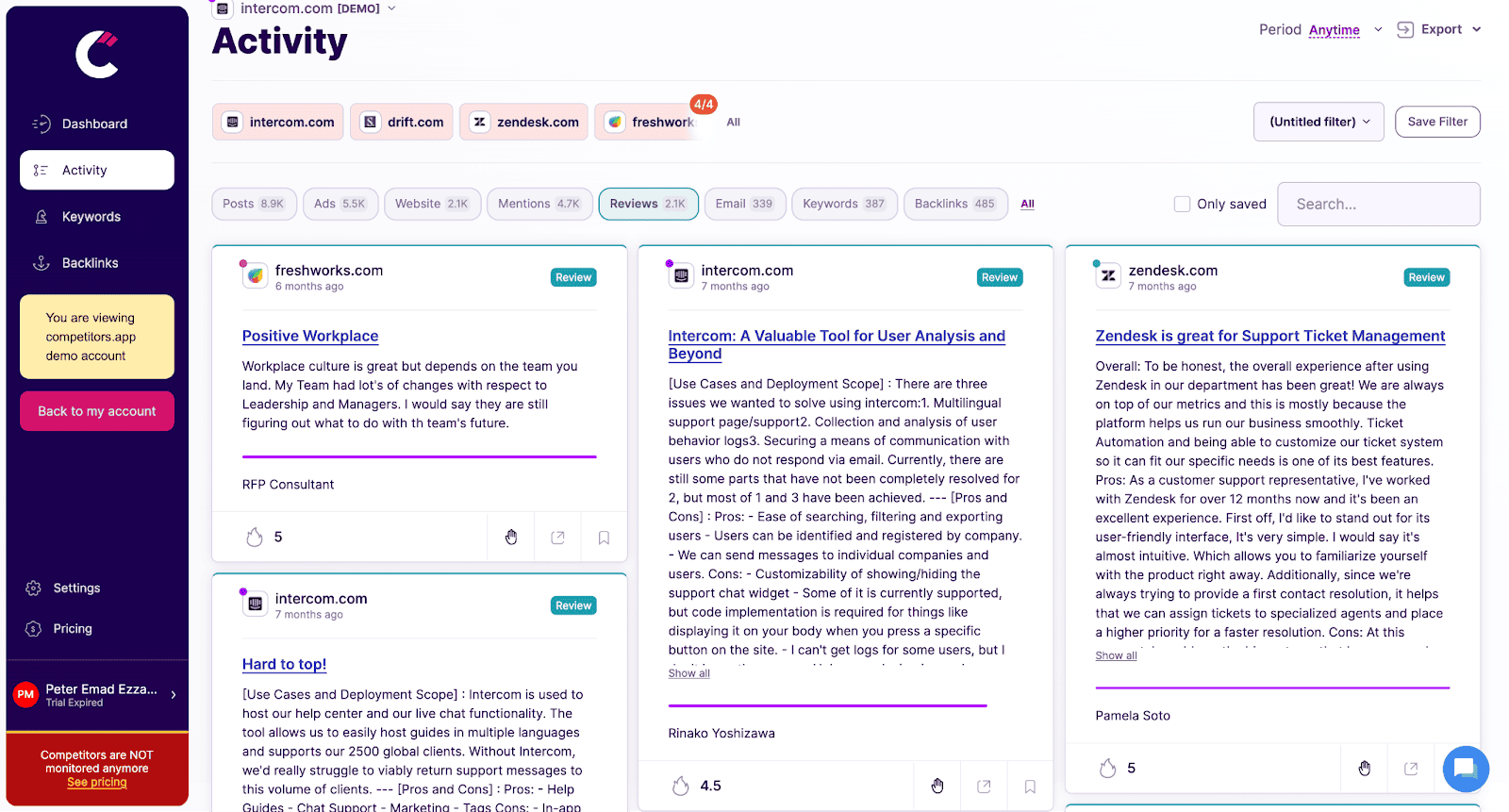
Analyzes customer reviews and ratings for competitors, providing insights into customer feedback, pain points, and product strengths, helping teams craft better sales pitches.
CRM and Automation Tools for Lead Nurturing
CRM platforms and automation tools are essential for managing customer relationships and streamlining workflows.
- Examples:
- HubSpot CRM: Offers robust automation and lead tracking features to nurture prospects efficiently.
- Salesforce: Combines CRM with advanced analytics to deliver personalized customer experiences.
- Benefits:
- Automate repetitive tasks, such as email follow-ups and data entry.
- Track every stage of the customer journey, ensuring no lead falls through the cracks.
Analytics Platforms for Measuring Campaign Success
Analytics platforms are crucial for evaluating the performance of your B2B product marketing efforts.
- Examples:
- Google Analytics: Tracks website traffic, user behavior, and conversions.
- Mixpanel: Focuses on product analytics, allowing you to understand how users engage with your offerings.
- Benefits:
- Gain insights into campaign performance and ROI.
- Identify areas for improvement and optimize future campaigns.
Measuring the Success of Your B2B Product Marketing Strategy: Key Metrics to Track
Customer Acquisition Cost (CAC)
What it means:
Customer Acquisition Cost (CAC) is the amount of money spent on marketing and sales to acquire one new customer. It includes all related expenses, such as advertising, salaries, tools, and commissions.
Why it matters:
CAC is a crucial metric to measure the efficiency of your marketing and sales efforts. If your CAC is too high, it may indicate that your campaigns are not cost-effective or that your targeting is off. A sustainable CAC is essential for long-term profitability in B2B marketing.
How it’s calculated:
Divide the total marketing and sales costs for a specific period by the number of new customers acquired during that same period. For example, if you spent $50,000 in one month and acquired 100 customers, your CAC would be $500 per customer.
Lifetime Value (LTV)
What it means:
Lifetime Value (LTV) is the total revenue a customer is expected to generate for your business over the duration of their relationship with you.
Why it matters:
LTV helps you understand the long-term profitability of your customers. When compared to CAC, it reveals whether your marketing investments are yielding sufficient returns. A common benchmark for a healthy business is an LTV that is at least three times higher than CAC.
How it’s calculated:
Multiply the average amount a customer spends per purchase by the number of purchases they make in a year and the average duration of their relationship with your business. For instance, if a customer spends $1,000 per year and stays for three years, their LTV is $3,000.
Conversion Rates
What it means:
Conversion rates measure the percentage of leads or visitors who take a desired action, such as signing up for a demo, completing a form, or making a purchase.
Why it matters:
This metric helps you evaluate the effectiveness of specific stages in your sales funnel. Low conversion rates may indicate issues with your landing pages, calls to action, or overall messaging.
How it’s calculated:
Divide the number of conversions by the total number of leads or visitors and multiply by 100 to get the percentage. For example, if 1,000 visitors land on your page and 50 complete the action, your conversion rate is 5 percent.
Engagement Metrics
What it means:
Engagement metrics track how your audience interacts with your marketing campaigns and content. This includes metrics such as email open rates, click-through rates, website bounce rates, and social media interactions.
Why it matters:
High engagement rates indicate that your content resonates with your target audience. Monitoring these metrics helps you refine your content strategy and ensure your messaging aligns with audience expectations.
How it’s calculated:
Each engagement metric is calculated differently. For example, email open rates are calculated by dividing the number of opened emails by the total sent and multiplying by 100. Click-through rates measure the percentage of people who clicked a link in your email or ad compared to those who saw it.
Retention Rates
What it means:
Retention rates measure the percentage of customers who continue using your product or service over a specific period of time.
Why it matters:
Retaining customers is often more cost-effective than acquiring new ones. A high retention rate indicates customer satisfaction, loyalty, and the effectiveness of your product.
How it’s calculated:
Subtract the number of new customers acquired during a period from the total number of customers at the end of the period. Then divide by the total number of customers at the start of the period and multiply by 100. For instance, if you started with 500 customers, gained 100 new ones, and ended with 550, your retention rate would be 90 percent.
Revenue Growth
What it means:
Revenue growth measures the increase in revenue over a specific period, reflecting your business’s overall financial progress.
Why it matters:
This metric indicates the success of your B2B product marketing strategy and its impact on your bottom line. Consistent revenue growth is a clear sign that your marketing and sales efforts are driving results.
How it’s calculated:
Subtract the revenue from the previous period from the current period’s revenue, then divide by the previous period’s revenue and multiply by 100 to get the percentage growth. For example, if your revenue increased from $500,000 to $600,000 in a quarter, your revenue growth rate would be 20 percent.
FAQs About B2B Product Marketing
What is the difference between B2B and B2C product marketing?
The main difference lies in the target audience and the approach. B2B product marketing targets businesses, focusing on solving specific operational challenges and emphasizing ROI, efficiency, and scalability. B2C product marketing, on the other hand, appeals to individual consumers, often using emotional storytelling and impulse-driven campaigns.
In B2B, the sales cycle is longer, involves multiple stakeholders, and requires more detailed, educational content such as case studies and whitepapers. Meanwhile, B2C is often quicker, with simpler messaging tailored to individual needs.
How can I measure the ROI of my B2B product marketing campaigns?
Measuring ROI involves tracking key metrics like Customer Acquisition Cost (CAC), Lifetime Value (LTV), and Conversion Rates. To calculate ROI, subtract your marketing costs from the total revenue generated by a campaign, then divide by the marketing costs and multiply by 100 to get a percentage.
For example, if you spend $10,000 on a campaign and generate $40,000 in revenue, your ROI would be 300%. Using analytics platforms like Google Analytics, HubSpot, or Salesforce can help track these metrics effectively.
What are the top tools for B2B product marketing?
Some of the most effective tools for B2B product marketing include:
- Competitors App for tracking competitor strategies and product launches.
- HubSpot CRM for lead management and email marketing automation.
- Google Analytics for tracking website traffic and campaign performance.
- Mixpanel for product engagement insights.
- Marketo for advanced marketing automation.
For a more comprehensive list, check out our guide on product marketing tools.
How do I create an effective B2B product launch marketing plan?
An effective B2B product launch marketing plan includes these critical steps:
- Research your target market and competitors to identify gaps.
- Develop a Go-To-Market (GTM) strategy that outlines your audience, positioning, and pricing.
- Build pre-launch buzz using teasers, email campaigns, and social media.
- Execute a synchronized, multi-channel launch with ads, events, and PR.
- Monitor launch performance through metrics like lead generation, conversions, and customer feedback.
Planning each step carefully ensures your product reaches the right audience and stands out in the market.
